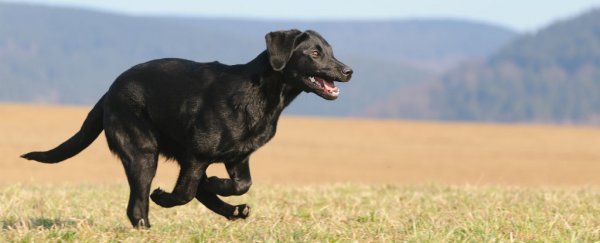Animals' ability to navigate long distances has long been shrouded in mystery. From the skill of racing pigeons to find their way home, to the seasonal breeding migration of the humpback whale, a huge range of creatures are capable of navigating in a consistent, precise and effective way.
Science has been slow to fully identify and understand the processes and cues involved in animal migration. However, evidence now suggests that a vast array of species, from beetles to birds to dogs, demonstrate amazing abilities to travel long distances, without the use of electronic GPS – something many humans have perhaps become over-reliant upon.
In April, the story of Pero, an adventurous four-year-old working sheepdog was reported. Pero managed to find his way from Cockermouth in Cumbria back to his previous home, near Aberystwyth, on the coast of mid Wales. In a real-life story reminiscent of Lassie Come Home, Pero somehow navigated about 240 miles in two weeks.
Significantly, his microchip confirmed this was not a case of mistaken identity, this young sheepdog really had made it back to his first home.
Stories like that of Pero's often attract media interest, leaving readers puzzled over how an animal can travel so far. Without speculating over whether the dog had been simply dropped off at the farm by someone who recognised him, these sorts of tales apparently prove the remarkable nature of animal instincts.
The deep relationship between people and their dogs also seems to drive a desire to believe that there is something magical about this ability. So, is this navigation skill because of 'personal bonds' between owner and dog, or is there a scientific understanding of the biology involved?
 Sniffing out adventure. Kevin Lobene/Shutterstock.com
Sniffing out adventure. Kevin Lobene/Shutterstock.comA huge variety of animals use a number of different sensory systems in order to travel distances. Desert ants, for example, use environmental olfactory cues and odour plumes – clouds of scent dispersed by the wind moving odour molecules – to navigate their way both to food sources and back to their nests.
Honeybees appear able to recall routes to feeding sites when exposed to scent from that location. Other species such as sea turtles, some amphibians, spiny lobsters and birds are able to use magnetic positional information to migrate or orientate towards specific target locations. This latter ability to exploit geomagnetic information is significant, as it is unlikely to be affected by weather conditions, cycles of light and dark, seasonality or global position in the same way that other cues might be affected.
In addition to a 'magnetic compass', birds also appear to use sun and star 'compasses' for navigation. Parasitic nematode worms are capable of moving towards new hosts by responding to seismic vibrations and other species use vibrations for prey capture.
Bats, birds and marine mammals can also identify location and travel with the help of sonar and infrasound, while visual landmarks appear critical for species such as ourselves.
But just how did Pero find his way home? It is likely that many animals, including dogs, navigate using an integration of many of the internal systems and external signals mentioned above. Dogs are also very reward driven – so positive associations with particular places or people are likely to result in a desire to return. The intense olfactory ability of dogs is also likely to assist location awareness – my own dogs appear to 'smell' the beach miles before we actually see it.
Interestingly, recent evidence that dogs and some primates possess a molecule associated with magnetoreception – the ability to sense a magnetic field – might further explain Pero's return home. Cryptochrome 1 is a light-sensing molecule that regulates circadian rythmns in species as diverse as plants and fish.
It seems that this molecule is present in the retinal cone cells of a range of other species too, including dogs, foxes, wolves, bears and badgers. It has also been identified in some primate species including the Bornean orangutan.
The reason for the presence of this molecule remains undetermined and researchers have acknowledged that it might not be related to magnetoreception. However, the identification of cryptochrome 1 in the photoreceptors of these mammals' eyes is identical to the location of the same molecule in birds.
This might suggest that the ability to respond to magnetic positional information is maintained in birds and some mammals. Indeed, magnetoreception has been documented in different mammal species, leading to the suggestion that dogs might even defecate in response to the earth's magnetic field.
It is interesting to note that researchers have as yet failed to identify this molecule in species such as bats, an animal already known to be capable of navigating using magnetic fields. Perhaps some species have evolved different ways to use magnetic fields to identify location, or, alternatively, a range of interacting biological processes may be involved.
It is important to remember however, that Pero and other animals reported as having travelled miraculous distances tend to be the exception rather than the rule. For every amazing story of a pet dog or cat travelling huge distances to return 'home', there are many more who are quite simply, lost. For those animals, even a deep bond with their human caregiver is not enough to drive or facilitate a long-distance return.
So while there does appear to be some fundamental biology that means even our domesticated species can navigate long distances, nailing down the exact science that enabled Pero's exceptional feat of navigation remains tricky.
Jacqueline Boyd, Lecturer in Animal Science, Nottingham Trent University.
This article was originally published by The Conversation. Read the original article.
